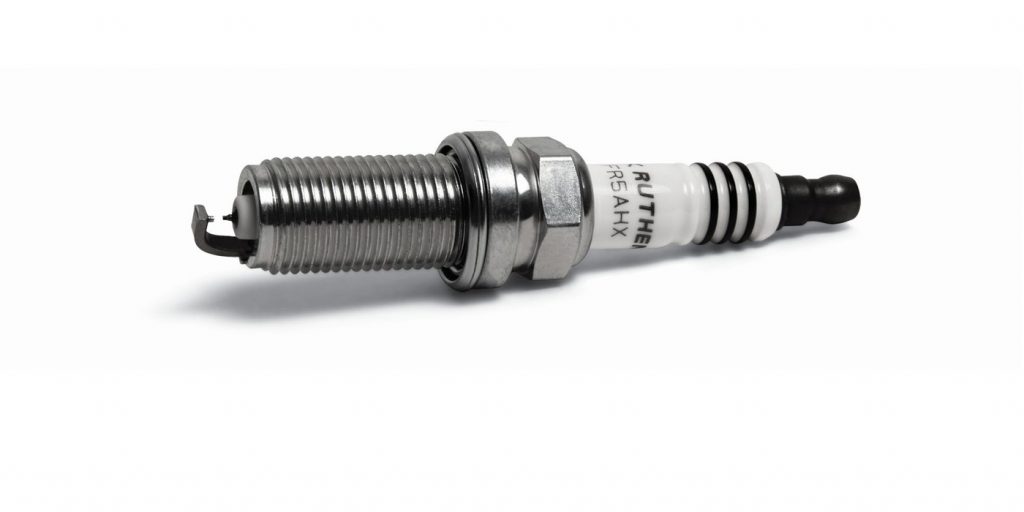The standard copper/nickel spark plug has been around for decades. And while it’s still in use today, manufacturers are shifting to other materials that make plugs last longer and perform more consistently. Although the copper core is the most conductive material, it’s soft and tends to wear out much faster than other precious metals.
“From a technology standpoint in spark plugs, we see a big shift in precious metals,” says Michael Burchi, ignition and spark plug product manager at NGK. “What we see now is the decline in copper [or nickel] plugs and an increase in iridium. This has been in transition since about 2005. Since 2010, we’ve been seeing iridium dominating the market on the OEM side, which has crossed over to the aftermarket side also. And from 2012 model years and on, 85% of vehicles are equipped with an iridium plug. In 2018, 92% of vehicles were equipped with an iridium spark plug from the OE.”
Precious Metals
One of the main reasons for the shift to precious metals such as platinum and iridium is they don’t wear as fast as soft copper. “We try to be careful in terms of precious metal, saying how much it’s going to increase the durability, but given the hardness of platinum, it’s a much more durable material,” says Burchi.
While the core of the electrode remains copper, manufacturers such as NGK use platinum or other precious-metal coatings to increase durability.
Even with the crossover to platinum or iridium, the metals don’t sacrifice any performance for durability.
“As the trend shows, we’ve gone from nickel to platinum to iridium, and ruthenium is the next step up in terms of hardness for a more durable plug,” says Burchi, adding that NGK launched the first ruthenium plug for the aftermarket a little over a year ago.
Tip Configuration
But it’s not just a shift in metal types. There also is a shift to high-ignitability plugs with precisely engineered tips.
“The tip configuration is essential to modern-day engines as we’re seeing smaller, more compact engines that still produce high performance, which requires the spark plug to use one of three different high-ignitability designs that we see today,” explains Burchi.
Spark plug electrodes come in various shapes and sizes today and can include angled, cut back, double fine-wire electrode (DFE), low-angled, multi-ground, oversized, projected square platinum electrode (PSPE), semi-surface discharge, surface discharge, taper-cut and trapezoid-cut.
Burchi says the tips used for most applications today are DFE, which would cover naturally aspirated engines, and PSPE for turbocharged engines. ”The two most advanced designs, PSPE and DFE, are integrated into all HX Series plugs – which means all HX plugs have one of those high-ignitability designs, which is essentially an OE design that we brought as an aftermarket solution.”
When asked about multiple-electrode plug benefits, Burch adds that NGK manufactures some of these plugs in the Laser Iridium and Laser Platinum Series, mostly for European nameplates.
“It’s not a common OE design. There is some benefit, but a multiple-ground electrode doesn’t necessarily mean it’s going to be a better-performing plug. Some people would consider that over-engineering. You’re not going to see a lot of performance by adding another ground electrode for certain applications.”
Many engines run better with a single electrode in one of the various tip designs we’ve discussed because it allows more area for ignitability to take place. You can shield it with some of the multi-electrode plugs, according to Burchi. “More ground electrodes can decrease the ability for the flame kernel to expand, which can affect things like the performance of your engine or even the fuel economy.”
The folks at NGK point out that making mileage claims for spark plugs no longer is accurate. You can’t say a nickel/copper plug lasts “X” number of miles, because they are application-specific these days. It doesn’t matter what metal type; it’s all dependent on the engine. And that affects the service interval.
“You need to look at your service manual,” says David Varady, marketing manager, brand – aftermarket division, for NGK. “Counter pros need to look to make sure you’ve got the correct service intervals. We offer it in our digital catalogs and through ACES/PIES. We’re the only exclusive spark plug supplier that includes that information in our catalog today.”













